A serious case of nostalgia has gripped specific segments of the high-end audio industry over the past five years and for the most part, the results have been rather satisfying for those who long for the components and loudspeakers of their youth.
That trip back to the future has also come with a rather serious price tag; one only has to look at the prices demanded by Klipsch, Wharfedale, JBL, NAD, McIntosh, and Mission for their “vintage” components and loudspeakers to understand that the target is not the next generation of audiophiles but the white haired crowd who suffer from gear fetishism.
The response to our coverage of vintage audio over the past three years proves that some audiophiles do regret jumping on the “next new thing” train over the years; one only has to read the comments on Instagram to understand that many are jealous of the newest generation of audiophiles who have discovered just how much they love better sound quality through iconic components of the 1960s, 1970s, and 1980s.
But to suggest that audio components and loudspeakers have not advanced over the past three decades is a rather strange hill to die on.
The truth is that there is no perfect one-size fits all solution for any of us and how you decide to enjoy music is the correct path for yourself.
I do recommend that you tune out those who tell you that you need $30,000 amplifiers and $5,000 phono cartridges to “experience” music the way that the artist intended.
Anyone with a grain of integrity knows that pushing that nonsense without pause reeks of bullshit.
The high-end press made that its raison d’etre for over four decades.
So where does that leave the Naim NAIT 50 Integrated Amplifier; a component that celebrates the past and competes with the Uniti Atom Network Amplifier which is priced in the same range, and one of the best streaming amplifiers ever made?

The World According to Julian
2023 has been a year of milestones for a number of high-end audio brands but Naim’s 50th anniversary feels very different; especially for those of us who started our high-end journey with the British manufacturer more than 25 years ago.
Is Naim Audio the British equivalent of McIntosh? I think so. Both brands have a cult-like following that extends to all corners of the globe. The approach might be different but we know more than a few audiophiles who own both brands.
You know you want to. Say it twice. Naim. Founded by Julian Vereker MBE (1945-2000) in 1973, Naim Audio have been one of the linchpins of the high-end audio movement for almost as long as I have been alive. It is not a brand that creates feelings of ambivalence within the audio world; audiophiles either love or hate it.
From the launch of its first products; the iconic NAP 200 power amplifier and NAC 12 pre-amplifier, Naim Audio have been troublemakers – in the best way possible. Everything about the industrial design, choice of DIN over RCA connectors, and decision to do things “right” vs “first” was part of a bigger plan.
Julian Vereker rubbed some people the wrong way. Sign of an entrepreneur and rebel. It should not shock anyone to learn that one of his greatest passions was racing cars. Naim’s products have always had a particular look (the infamous Naim green) and feel – I rather love the look of older Naim kit with its switches and volume knobs. Vintage Naim equipment does not come cheap and there is a huge demand for it.

The response to the recently introduced Naim NAIT 50 Integrated Amplifier proves that to be true. All 1,973 units will be gone before the end of 2024, and that’s rather remarkable considering the state of the global economy and the high price tag.
It certainly doesn’t look like anything else. The original NAIT integrated amplifier was introduced in 1983 and it certainly bucked the “blowtorch” trend that was popular with amplifiers made in America and Japan at the time.
The idea that “more is more” didn’t fly very well with Julian Vereker.
His biggest concern was sound quality, and something our British friends like to call “PRaT” (pace, rhythm and timing). The music coming out of your loudspeakers couldn’t sound very good if the components creating that sound were incapable of getting those things correct.
One of the knocks against Naim under the tutelage of Julian Vereker, was that their products didn’t play well with others in the sandbox. I think there was some truth to that, but it didn’t really impact how their amplifiers made music with a lot of different loudspeakers.
Naim built their own loudspeakers for a long time, and while many who have belonged to the “cult” for many decades built very satisfying systems around those loudspeakers – I was always more impressed with how Naim equipment worked with other brands; particularly Spendor, Harbeth, Wharfedale, ProAc, Rega, Tannoy, Rogers, Neat, and Graham Audio.
Vereker passed away in 2000 and things started to change; Naim components were suddenly offered with RCA input jacks and the company began to focus more on high-end digital playback, network amplifiers, and home theater components.
The marriage to Focal, one of the largest high-end loudspeaker brands in the world, took a lot of people by surprise and there were certainly some valid questions about how the two legacy brands situated across the English Channel from one another would work together and grow.
The reality is that the Naim/Focal marriage has been successful beyond any of their own expectations and the Focal Powered by Naim experience is well worth checking out if one exists near you.
Naim Brand Ambassador, Jason Gould, joined me to discuss the first fifty years, the legacy of the late-Julian Vereker, streaming, and why the brand is well-positioned to grow rather significantly over the next decade.
You can listen to the podcast here.
NAIT 50

25 watts per channel into 8 ohms from the internal class AB amplifier, and we’re happy to see that Naim has designed a new MM phono preamp and headphone amplifier for the NAIT 50.
The output increases to 40 watts into 4 ohms which is more than enough for the type of loudspeakers that will be paired with the amplifier.
The $3,599 USD asking price will raise some eyebrows considering the price of the aforementioned Naim Uniti Atom Streaming Amplifier that delivers everything but the history, phono section, and vintage vibe of the NAIT 50.

The NAIT 50 in a minimalist design that features 1 x MM phono input (RCA, 5mV), 2 x 5-pin DIN inputs, and a single 6.35mm headphone jack located on the front panel.
The amplifier is a brick and the all-metal construction inspired confidence from the first moment that I removed it from the packaging.
In the grand scheme of things, 10 pounds doesn’t sound like a lot but this is one solid amplifier. For many music listeners, it may be all that they ever need.


The NAIT 50 was inspired by the NAIT 1 and at 8.7 cm x 20.7 cm x 32.1 cm (H x W x D) takes up very little space.
Should Naim decide to introduce a matching streaming module in a similarly-sized chassis — it would still look rather small on a rack or even desktop.
If not for the “Stream” imprint above one of the push-button selector switches on the front panel, the NAIT 50 would fit perfectly in 1973 and that makes me very happy.
The binding posts are recessed receptacles that require banana pins; which worked perfectly with the multiple sets of Chord Company and QED loudspeaker cables I have in my collection.
The aluminum volume control feels sturdy and offers very smooth operation.
Listening

The NAIT 50’s arrival could not have been scripted any better; the past 8 weeks have taken a toll on my health in the aftermath of the October 7th attack in Israel and subsequent war. My mind has been elsewhere and a quick trip across the pond did provide some clarity. Being there was a necessary slap across the face and it made me think.
How exactly do I want to live the rest of my life?
Certainly not here.
And with a lot less stuff.
Knowing what I know about the size and shape of homes and apartments in Israel — equipment choices will need to be made.
Space will be at a premium and one will have to accept that products like the NAIT 50 might be the logical option for a myriad of reasons.

A system comprising of the NAIT 50 and Cambridge Audio MXN10 Network Player would work exceptionally well inside of a wall unit or placed on the top shelf of a credenza.
The power output of the NAIT 50 also requires careful loudspeaker matching if one wants to fill a slightly larger space; the amplifier and loudspeaker combinations at home had zero issues filling the den (16′ x 13′ x 9′) and dining room (16′ x 10′ x 9′) with more than enough volume and impact.
Logical combinations were the Q Acoustics 5040, 3050i, and Wharfedale Diamond 10.1s. The Acoustic Energy AE100 MKII also worked rather well on a pair of stands.
Turntables included my Thorens TD145/Dynavector 10×5, Thorens TD-160 Super/Ortofon 2M Black, NAD C 588/Goldring E4, and the Yamaha YP-701 with a Grado Timbre Opus3 MI Cartridge.
The 2.5mV output of the Dynavector was slightly low for the MM stage (40dB of gain) which required some additional volume; 3mV or higher proved to be fine.
Those familiar with the current Naim “house” sound will find much to love about the NAIT 50; dynamic, excellent pacing, clear, detailed, and wonderfully expressive with all types of music.
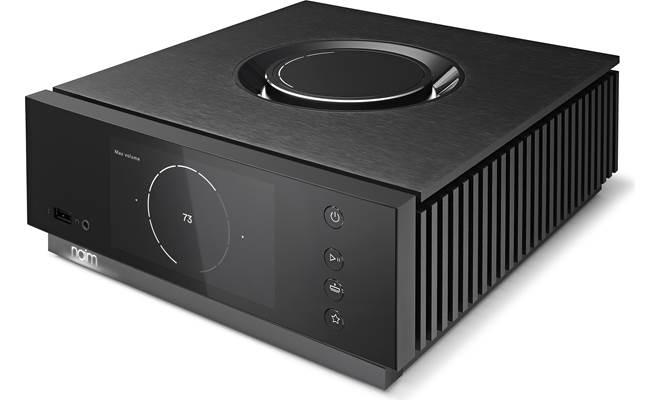
When I reviewed the Uniti Atom, there was some additional warmth to the sound that has never been the hallmark of Naim electronics; I rather enjoyed that change but it also felt designed for the types of very open and neutral sounding Focal loudspeakers that it would likely be sold with.
The NAIT 50 feels more “old school” Naim to me but with a larger soundstage and even better clarity.
Some have bemoaned the lack of soundstage depth and imaging prowess of Naim electronics over the years and there is some truth to that; the focus has always been on clarity, pace, presence, and the overall flow of the music.
You will not confuse the NAIT 50 with the Unison Research Simply 845 which pushes its ethereal reproduction of sound into the middle of room and allows to linger just long enough to make you think it is real.
The British amplifier reminds one that music has a tempo — a living pulse that must be present in order for the sound to raise your heartbeat and get those long dangling things called legs moving.
Both approaches have merit. Both amplifiers accomplish those tasks exceptionally well.

The Q Acoustics 5040 felt like a logical match to the NAIT 50 and it certainly works; the thinner tonal balance of the loudspeakers is a better match with the Uniti Atom and Cambridge Audio Evo 150 (review next week), but the synergy between the two British products is strong.
Bass notes are never overly thick or sluggish through the NAIT 50 and whilst I would agree that the 5040 requires some additional shakshouka in its tuchas to feel more impactful, the NAIT 50/MXN10 combination gets very close.
The upper bass and lower midrange are superbly clean through the British box and male vocals get pushed slightly forward of the front plane of the loudspeakers and locked firmly in place.
When Sam, Freddie, and Elvis cut loose — the NAIT 50 propels them forward and then gets out of their way.
Female vocals are slightly more incisive than I would normally like, but the MXN10’s slightly darker tonal balance and softer top end alleviate that issue for the most part.

The larger Q Acoustics 3050i are a more restrained sounding listen with a much thicker sounding bottom end.
The NAIT 50’s additional top end energy worked well in this scenario giving cymbals, higher strings, and female vocals greater presence overall but without any sense of hardness.
The 3050i’s tweeter rolls off rather quickly compared to its sibling and that made it a slightly better match overall.
Those considering the marvellous Wharfedale Linton, or Denton 85th Anniversary Loudspeakers must put the NAIT 50 on their audition list based on my experience with the Diamond 10.1s.
Very few people are likely to partner an amplifier as expensive as the NAIT 50 with the Diamond 10.1 loudspeakers, but none of that takes away from the synergy between the two products.
The Wharfedale sounds larger than it looks and it certainly responded well to the NAIT 50’s sense of drive, excellent timing, and clarity.
One of the biggest surprises of the NAIT 50 is the headphone amplifier that was clearly designed from the ground up and aimed at those of us with growing collections of dynamic headphones like the Meze Audio 109 Pro’s and 99 Classics.
Grado fans need to pay close attention to this feature as well.
Darker sounding headphones like the 99 Classics and 109 Pro benefitted enormously from the NAIT 50’s power, clarity, and strong pacing.
Planar headphones are not as well served unless you really turn up the volume.
One of the biggest knocks against the 99 Classics is the bass heavy presentation that can lose some of its charm with the volume pumped up too far; the NAIT 50’s excellent control in the bass region and clarity in the mid bass alleviated a lot of that with electronic music and classic rock.
Headphones with a tilted treble range can work just fine — but remember to watch your volume levels.

Final Thoughts
There is no question that the Naim NAIT 50 appeals to the hardcore Naim customer who likely started with the original NAIT 1.
Is one better off spending slightly more on the Uniti Atom which offers one of the best streaming platforms currently available and outstanding industrial design that leaves most of the category in its wake?
For those that already own a network player and don’t want to change, the NAIT 50 makes it extremely easy to add one and I have already found the perfect partner in the Cambridge Audio MXN10 that adds some additional tone and texture to the sound.
What shifts the pendulum for me is the high quality MM phono section, robust headphone amplifier, and simplicity of the design.
Julian Vereker would have enjoyed the NAIT 50 and it does pay a rather lovely tribute to the brand that he created. Get the loudspeakers and sources correct and this is one amplifier that will remain relevant for those who love music for years to come.
For more information: naimaudio.com
Related Reading:







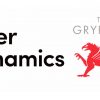









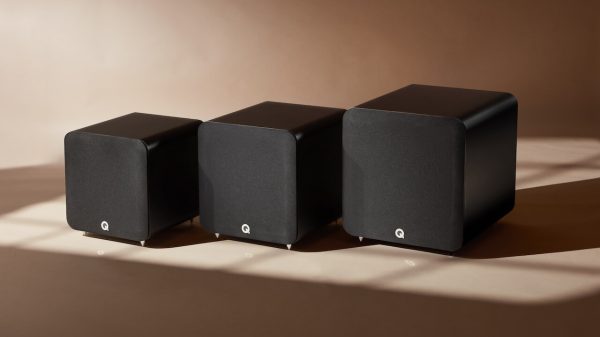

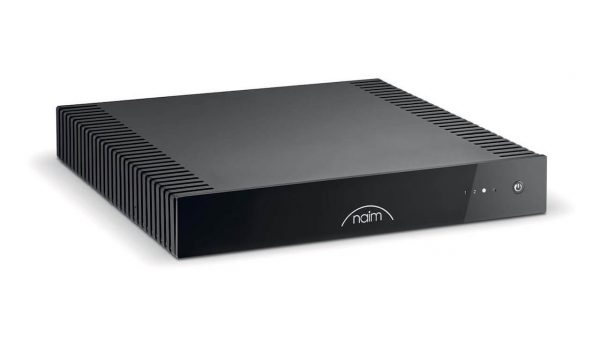
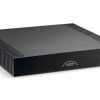
















Scott Lylander
December 4, 2023 at 3:48 pm
I definitely need a Naim Uniti Atom, nothing has paired so well my the ELAC BS 403 bookshelves than that. I’ll spend the extra on highest tech rather than nostalgia.
ORT
December 4, 2023 at 4:01 pm
Well said, Ian. There is comfort in music (and equipment!) of the past.
Having said that I do think Vereker could have chosen a better way to describe it than the audio acronym, PrAT.
The definition of prat is:
“an incompetent or stupid person; an idiot” or
“a person’s buttocks”
Hmmmm…Both definitions describe frAudiophiles perfectly.
Go figure. The “Sigh End” is often filled with buttheads or as I still prefer to call them (ALERT! ALERT! ALERT!) Asstriches. Think about that portmanteau I just gave you folks…
They (the frAudiophiles) need to read the truth of your words hear in this article as well as others on this site. Some will see the light and hear the song but for the most part The FARCE is too strong within “them”. Fear not.
You know their Gaim.
Keep preaching and more will join the choir my friend.
Me? I’m just a voice, whining in the shillderness of fAudio.
ORT
Rafael Pagan
December 6, 2023 at 11:49 pm
Great review. I’m currently breaking in a Nait 50 fed by an ND5XS2 streamer; speakers are Neat Iota Alpha. The clarity of this amp is far superior to the Nait 5si I own. Bass on the 5si is thicker but not necessarily better. The phono amp is amazingly quiet, although that is one of the defining qualities of this amp. It’s dead quiet. PrAT is usual Naim. Very cool amp. Thank you!
Jake
December 8, 2023 at 11:44 pm
I replaced my Naim Uniti with a Nait 50 and Emerson Analog DAC/Streamer. The sound upgrade was significant. I won’t go back to an all in one.
Ian White
December 9, 2023 at 7:03 pm
Jake,
Interesting. I love the NAIT 50 but did not love my time with the Emerson. I found it too sterile sounding for my system.
I do agree that the NAIT 50 sounds better than the Uniti Atom. It reminded me of the best Naim amplifiers with even more presence and a larger soundstage.
Enjoy it.
Best,
Ian White
Rafael Pagan
December 26, 2023 at 6:38 pm
Hello again! How about a pair of Spendor Classic 4/5 with this amp? Intrigued about that combo. I’m experiencing some forwardness with the Neat Iota Alpha.
Ian White
December 26, 2023 at 10:58 pm
Rafael,
It would certainly work from a power perspective with the Spendor Classic Series, but I would recommend a listen because the new generation of Spendor loudspeakers are decidedly more neutral sounding than the SP2/3e that I owned for 10 years.
The pacing and clarity would be first rate.
The 4/5 might be the only speaker from the range that would be a good match depending on the size of the room and tonal balance.
Best,
Ian White
Rafael Pagan
February 11, 2024 at 2:20 am
Hello again! An update on the Nait 50. I started using a pair of NAC A5 speaker wire from Naim. The difference vs the QED XT40i, a great cable in my opinion, is not subtle. The sound is much more balanced, it sounds right, as if everything has locked into place. The phonostage on this amp is amazing. The 50 sounds so much better with vinyl than with digital music. I’m using Naim’s own ND5 XS2, a very decent component with great synergy and yet the P3 with an Exact via the internal phonostage is better.
I highly recommend this amp. Noise floor is virtually non existent. Get one before they’re gone.